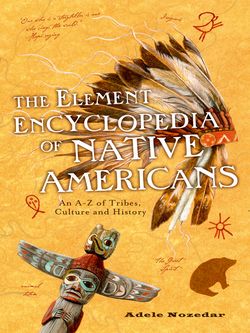Читать книгу The Element Encyclopedia of Native Americans: An A to Z of Tribes, Culture, and History - Adele Nozedar - Страница 25
APACHE MEDICINE CRAZE
ОглавлениеDuring the spring of 1882, Doklini, a popular medicine man of the Apache tribe who was otherwise known as “Attacking the Enemy,” otherwise Nabakelti, told his considerable number of followers who lived on the White Mountain Reservation in Arizona that he had had a vision, a divine revelation: the information imparted to Doklini revealed how the dead could be brought back to life.
At this time, the losses to Native Americans of all tribes are impossible to estimate; suffice to say that everyone must have been affected by the deaths of family, friends, and colleagues because of diseases, war, and starvation. Such a message of hope must have been inspiring, and the same emotions would hit those affected by the Ghost Dance Movement, which would gain momentum just a few short years later.
Doklini prepared some equipment that he needed for the miracle. He constructed 60 large wooden wheels painted with magical symbols, and also carved 12 sacred sticks. One of them, which he shaped into a cross, was given the title “Chief of Sticks.” Then he gathered 60 men from among his most fervent followers, and then Doklini started the dance.
When the time was right, Doklini went to the grave of a man, prominent among his people, who had died just a little while earlier. The medicine man and his followers danced around the grave and then disinterred the bones. They then danced a circle dance four times around these bones; this dance went on all that morning, and then the group chose another grave and repeated the ritual in the afternoon. A shelter of brush was placed over the bones in each instance.
The next set of instructions was then given by the medicine man. Everyone must pray for the next four mornings, he said; at the end of this time, the people to whom the bones belonged would be restored once more to life and vitality.
By the second morning of prayer, the small band of Apache, anticipating the restoration of two of their loved ones, were almost at the point of hysteria, convinced that Doklini’s medicine would have the desired effect.
Meanwhile, news of this interesting development had reached some of the Apache scouts who were based at Fort Apache, and were excused from their duties so that they could go and see what was happening. To the outside visitor, it must have appeared as though those waiting for their dead to be resurrected had gone crazy; this was the information that was relayed back to the fort. The presence of Doklini was requested, who responded by sealing the brush shelters over the bones tightly and suggesting, angrily, that he would appear to answer questions after two more days had passed. He also called together his people, explaining that the interruption meant that the bones might not reconstitute in the way he had promised, but that, because of the interference and interruption of the white men, the whole procedure might need to be repeated.
Doklini traveled to Fort Apache with something like an entourage: 62 dancers and all the equipment: the wheels, the sticks, and ceremonial drums. In all, it took the party nearly two days to reach their destination, stopping to dance along the way, and they made an encampment just above Fort Apache, dancing, drumming, and waiting for someone to come and see them. But no one came. After dancing and waiting all night, at dawn the party wended their way back home, arriving not long after dawn after a day and a half of traveling. Word came that the agent at Fort Apache was expecting them. Doklini replied that they had traveled to Fort Apache, no one came to see them, and that he wasn’t going to go all that way again.
The powers at Fort Apache decided to send a troop of 60 men to the small Apache settlement where Doklini and his band were based, with the purpose of arresting the old medicine man. Sixty men might seem extreme, given the task, but the agent was concerned that the Indians might resist the arrest of their spiritual leader.
In the event, neither Doklini nor his followers put up any resistance at all, and rode with the men to their temporary headquarters. There was no sign that there would be any trouble, but suddenly one of Doklini’s brothers, angered at the arrest, rode into the camp and killed the commanding officer with a single bullet. Seconds later, a soldier hit Doklini over the head with a blunt weapon; the old man was killed.
Knowing that a fight was looming, the soldiers hastily prepared their defenses. The Apache, outraged at the loss of Doklini, did indeed attack, and killed six of the soldiers. The pack animals escaped, but in the ensuing months the fighting caused deaths on both sides.
Had the authorities at Fort Apache not interfered, the chances are high that, after the fourth day, when none of the bones had been transformed into living men once more, the whole Apache Medicine Craze would have fizzled out, Doklini discredited, but no lives lost.
